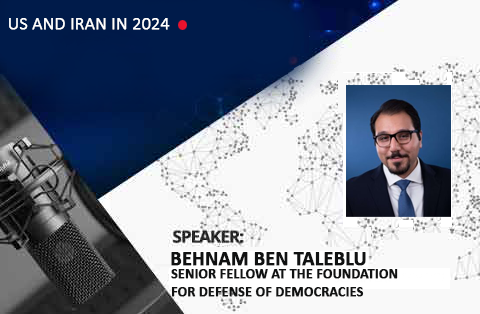The SPME Board of Directors has voted to endorse the CASHE Statement on Contemporary Antisemitism in Higher Education, which was recently issued by a distinguished inter-disciplinary group of scholars convened at the U.S. Holocaust Memorial Museum for a two-week research workshop. The scholars urged the U.S. Department of Education to address severe incidents of campus anti-Semitism through full enforcement of Title VI of the Civil Rights Act of 1964.
In addition, they urged Congress to pass legislation prohibiting religious discrimination in federally funded educational institutions. SPME endorses this statement in order to urge Congress, the Education Department, university leaders and others to address this serious problem.
SPME Board Members Kenneth L. Marcus (CUNY/Baruch and Institute for Jewish & Community Research) and Tammi Rossman-Benjamin (UC Santa Cruz) convened the CASHE Workshop, and SPME Board Member Leila Beckwith (UCLA) was among the participants.
Contemporary Antisemitism in Higher Education:
Manifestations, Sources, and Responses
A statement by the participants of “Contemporary Antisemitism in Higher Education,”
a workshop convened at the Center for Advanced Holocaust Studies of the United States Holocaust Memorial Museum, July 26 – August 6, 2010
While the great majority of students and faculty members at North America’s colleges and universities show no signs of harboring antisemitic attitudes or sentiments, numerous campuses nevertheless have become sites of manifest hostility to Jews, Judaism, and the Jewish state. Jewish students and others perceived to be Jews or associated with Jews have been physically and verbally assaulted, threatened, taunted, mocked, and stalked. Jewish student property and the property of Jewish university communal organizations have been damaged or destroyed. In recent years much, although not all, of this hostility is expressed through the guise of “anti-Zionism,” an ideological and political category that frequently disguises or morphs into recognizable forms of antisemitism. The agents of this animus seem motivated by various passions, ideas, beliefs, and ideologies. While they are not representative of most of the people who teach and study in America’s institutions of higher learning, their words and actions are meant to have an impact on large numbers of others and persuade them about the rightness of their views. These views seem triggered by and/or find validation in a range of ideological positions that have become well established on America’s campuses. In some cases, it is relatively easy to understand the precise connections between the histories, ideological emphases, priorities, and biases of these currents of thought and newly emergent manifestations of antisemitism. In other cases, the connections are more implicit than explicit and need to be carefully analyzed and explicated before firm conclusions are drawn.
This document offers reflections on these troubling phenomena and also presents recommendations meant to mitigate some of the worst aspects. The document is the product of a scholarly workshop entitled Contemporary Antisemitism in Higher Education, which convened at the Center for Advanced Holocaust Studies of the U.S. Holocaust Memorial Museum, July 26 – August 6, 2010. Workshop participants included: Kenneth L. Marcus (Co-convener), City University of New York, Baruch College School of Public Affairs and The Institute for Jewish & Community Research; Tammi Rossman-Benjamin (Co-convener), University of California at Santa Cruz; Alvin Rosenfeld (Resource Scholar), Indiana University; Leila Beckwith, University of California at Los Angeles; Gabriel Brahm, Northern Michigan University; Richard Cravatts, Boston University; Michelle Sieff, Yale Initiative of the Interdisciplinary Study of Antisemitism; Alexander Tsesis, Loyola University, School of Law; Aryeh Weinberg, Baylor University and The Institute for Jewish & Community Research; and Dr. Elhanan Yakira, the Hebrew University of Jerusalem. We are grateful to the USHMM for enabling us to convene this workshop, but we wish to make it clear that the views presented in these pages are those of the participants alone and do not necessarily reflect those of the Museum.
Definition of Antisemitism
Merriam-Webster’s dictionary has long defined antisemitism as “hostility toward or discrimination against Jews as a religious, ethnic, or racial group.” As the U.S. Department of State has correctly observed, “the basic elements of this definition remain applicable,” but anti-semitism “is an adaptive phenomenon and continues to take new forms.” For this reason, it is necessary to define and conceptualize the phenomenon in a manner that reflects both historical continuities and present conditions.
In 2005, the European Monitoring Centre on Racism and Xenophobia (EUMC) established the now widely-accepted working definition of antisemitism as “a certain perception of Jews, which may be expressed as hatred toward Jews,” noting that “[r]hetorical and physical manifestations of antisemitism are directed toward Jewish or non-Jewish individuals and/or their property, toward Jewish community institutions and religious facilities.” The EUMC properly recognized that “such manifestations could also target the state of Israel, conceived as a Jewish collectivity.” Specifically, the EUMC provided several instructive examples of antisemitism, including the following:
· Making mendacious, dehumanizing, demonizing, or stereotypical allegations about Jews as such or the power of Jews as a collective — such as, especially but not exclusively, the myth about a world Jewish conspiracy or of Jews controlling the media, economy, government, or other societal institutions.
· Accusing Jews as a people of being responsible for real or imagined wrongdoing committed by a single Jewish person or group or even for acts committed by non-Jews.
· Denying the fact, scope, mechanisms (e.g., gas chambers), or intentionality of the genocide of the Jewish people at the hands of National Socialist Germany and its supporters and accomplices during World War II (the Holocaust).
· Accusing the Jews as a people, or Israel as a state, of inventing or exaggerating the Holocaust.
· Accusing Jewish citizens of being more loyal to Israel or to the alleged priorities of Jews worldwide than to the interests of their own nations.
Additionally, the EUMC working definition presents specific examples of “the ways in which anti-Semitism manifests itself with regard to the state of Israel taking into account the overall context”:
· Denying the Jewish people their right to self-determination.
· Applying double standards by requiring of it a behavior not expected or demanded of any other democratic nation.
· Using the symbols and images associated with classic anti-Semitism (e.g., claims of Jews killing Jesus or blood libel) to characterize Israel or Israelis.
· Drawing comparisons of contemporary Israeli policy with that of the Nazis.
· Holding Jews collectively responsible for actions of the state of Israel.
The EUMC recognizes, however, that criticism of Israel similar to that leveled against other countries does not constitute a form of antisemitism. Indeed, all or substantially all commentators agree that mere criticism of the State of Israel is not antisemitism per se.
In 2008, the U.S. State Department correctly concluded that the EUMC working definition “provides an adequate initial guide by which anti-Semitism can eventually both be defined and combated,”and has adopted the basic EUMC text as its own. Numerous other authorities have also confirmed the utility and appropriateness of this definition and have likewise adopted it, including the Inter-parliamentary Coalition for Combating Antisemitism and the U.K. All-Party Parliamentary Inquiry on Antisemitism. Based upon widespread agreement and usage, we also adopt the EUMC definition as authoritative for the purposes of evaluating if incidents on North American college campuses can properly be characterized as antisemitic.
Manifestations of Antisemitism at North American Colleges/Universities
Over the last ten years, innumerable instances of antisemitism have taken place at North American colleges and universities. For corroborating evidence, please see the brief bibliography of sources appended to this document, especially The Uncivil University: Intolerance on College Campuses, Revised Edition, by Gary A. Tobin, Aryeh K. Weinberg and Jenna Ferer, published in 2009.
Physical aggression/intimidation
Jewish students as well as others perceived to be Jews or associated with Jews have been threatened or attacked on college/university campuses. Examples include physical assault with and without weapons, spitting on students, and forceful physical confrontation that does not result in attacks. Students have also reported being taunted, mocked, stalked, and otherwise made to feel unwelcome or unsafe on campus.
Pro-Israel and other Jewish speakers have suffered threats and confrontations at their appearances on campuses. Mobs of angry students and hostile off-campus participants have created conditions so volatile and unpredictable that administrators have decided that they cannot guarantee the safety of speakers or attendees. Speakers and attendees have been escorted by police due to threats posed by protesters. On occasion, university property has been destroyed in riotous encounters.
Physical destruction/defacement of property
Jewish structures and symbols such as a synagogue, a succah, a Holocaust memorial, and a Hillel building have been destroyed and/or defaced with both antisemitic and anti-Israel slogans and imagery. Protesters on campuses reportedly have seized property of Jewish students including Israeli flags and recording equipment. Jewish student group literature and pamphlets have been defaced and torn down on campus.
Verbal aggression
Jewish students have reported hate speech and threats directed at them based upon their Jewish identity. Verbal aggression exhibits itself in various forms, from accusatory questioning of students’ Jewish identity to overt calls for the murder of Jews. Students have also reported hostility from faculty and offensive remarks questioning their identity and denying their heritage as Jews.
Antisemitic discourse
Antisemitic discourse has repeatedly occurred at conferences, panels, and by individual speakers, sometimes sponsored by student groups and/or academic units or by faculty in their classrooms. Sometimes under the guise of an anti-Israel forum or event, speakers have made allegations about Jewish conspiracy, supremacy, and duplicity. Such speakers often directly or indirectly imply an undue influence by American Jews and other Jewish communities worldwide on Western governments in support of Israel. Such speakers identify the “Jewish Lobby” as a pervasive and pernicious influence on the politics of the nations in which they reside.
Speakers have openly supported designated terrorist organizations and on at least one occasion have reportedly raised funds for these groups. Speakers have resurrected racial and historical stereotypes of the Jews as a people predisposed toward the subjugation of other peoples.
Campus newspapers have published op-eds, columns, and editorials that demonize Israel and variously accuse the Jewish people of controlling America, of being guilty of dual loyalty, and of holding to a collective belief in ethno-religious supremacism.
Antisemitic imagery
Traditional forms of anti-Jewish graffiti have been found on various campuses. These employ neo-Nazi/white supremacist imagery, including the swastika alone and the dual lightning bolt “SS.” Graffiti reacting to such global events as the terror attacks of 9-11, the war in Iraq, and various events in Israel, have defaced walls on college campuses. These forms of vandalism often blame such events on Jews and/or Israel. Newer incarnations of more traditional imagery are integrated with Israeli symbols, including the swastika superimposed upon the Star of David or equated with Jewish and/or Israeli symbols. Additionally, texts referring to Jews in a derogatory manner or calling for death to Jews and/or Israel appear with or without attached imagery.
Annual anti-Israel weeks are now regularly held across Europe and the U.S. These events present speakers, rallies, and other activities under the banner of such inflammatory titles as “Israel: the 4th Reich,” “Israel Apartheid Week,” and “Holocaust in the Holy Land, Israel: The Politics of Genocide.” Features at many such public events on campus include an array of offensive imagery on posters and other materials. Nazi imagery is a regular occurrence, as are manipulated pictures demonizing Israeli leaders and sometimes also Jewish political or community leaders, portraying them with fangs, blood, red eyes, etc. Instances of guerilla theater performed on campus present Israeli civilians and soldiers using highly inflammatory stereotypes of Jews.
Anti-Jewish flyers, posters, signs, and other visual or literary material are exhibited on campus either related to a campus event or independent of any specific protest or rally. Misinformation, offensive symbols, and accusations are included in the content of the propaganda. At times, these materials cross over into blatant bigotry, including the depiction of Jewish bloodthirstiness and the reincarnation of the blood libel.
Holocaust denial, minimization, and distortion
Words and images which accuse the Jews as a people or Israel as a state of inventing or exaggerating the Holocaust, or which draw comparisons of contemporary Israeli policy with that of the Nazis, are considered to be anti-Semitic according to the EUMC working definition (see above). And yet, speakers, faculty members, students, and literature distributed on campus have addressed Jewish history and the history of the Third Reich in ways that minimize or deny the Holocaust. Jews are accused of having sensationalized and used the memory of the Holocaust for political gain. In addition, Holocaust imagery in cartoons and flyers often has been used to demonize Israel and Jews. Jews and Israelis are depicted as Nazi soldiers, Jewish symbols are equated with Nazi symbols, and Jews/Israelis are depicted as Hitler and other Nazi leaders.
Boycott, divestment, and sanctions
The movement to conduct boycotts, apply sanctions, and use divestment (BDS) against the State of Israel has increased in scope and strength on college campuses over the last few years. Some of the movement’s leaders have stated that the purpose of BDS is nothing less than the fundamental denial of the right to Jewish national self-determination, amounting to the elimination of the Jewish state. Speakers, rallies, protests, and other forms of BDS expression routinely exhibit disturbing forms of antisemitic imagery, rhetoric, and action.
Unequal responses to bigotry on campus
At many universities antisemitic actions and language are not addressed with the immediacy and force typical of administrative responses to other forms of bigotry on campus. Often, administrators cite the academic tenets of free speech and academic freedom in regard to antisemitic speech, whereas bigotry against other groups, including African-Americans, Latinos/Hispanics, women, and Lesbians, Gays, Bi-Sexuals, and Transgendered persons (LGBT) has been publicly condemned by administrators. The unequal application of university policies and the unequal use of moral authority by administrators set a dangerous precedent that lowers the norms of tolerance on campus and tacitly or overtly condones antisemitic rhetoric.
Effects of Campus Antisemitism on Jewish Students
These manifestations of antisemitism have created a hostile environment for Jewish students on some college campuses. Jewish students have reported feeling physically unsafe, emotionally and intellectually harassed and intimidated by their peers and professors, isolated from their fellow students, and unfairly treated by faculty and administrators.
In addition, as a result of their experiences of campus antisemitism students have left the university, dropped classes or changed fields of study, avoided expressing their views with faculty and students, ceased attending lectures related to Israel or Jewish issues, avoided certain parts of the campus, hidden symbols of their Jewishness, avoided taking any actions or making any statements that could identify them as Jewish, ceased participating in Jewish communal activities, and sought psychological counseling.
Definition of Hostile Environment
Title VI of the Civil Rights Act of 1964 prohibits discrimination on the basis of race, color, or national origin in federally funded programs or activities including most U.S. colleges and universities. This provision does not mention religion. In July 2006, the U.S. Commission on Civil Rights correctly observed that “severe, persistent or pervasive” antisemitic incidents on college campuses “may constitute a hostile environment for students in violation of Title VI of the Civil Rights Act of 1964.” In order to become actionable, these incidents must consist of more than subjectively offensive disparaging remarks. However, the incidents need not be directed at the complainant in order to create a hostile environment. Moreover, the Supreme Court has recently established that a hostile environment may consist of a succession of harassing acts, none of which is actionable when viewed in isolation. Under these standards, it is evident that a hostile environment towards Jewish students has developed on some North American university campuses. Universities that are placed on notice of such conditions are legally obligated to rectify them.
Ideological Sources of Antisemitism on College Campuses Today’s antisemitism is complex and contradictory, deeply and richly illogical; yet it is possible (and necessary) to map its “logics,” expressed in a variety of ideologies hostile to Jews, Judaism, and the Jewish state. Here are some of the “nodal points” of the “new” antisemitism and the interconnections between them.
Expressions of campus-based hostility toward Jews and demonization of the State of Israel are energized, organized, and transmitted by students, faculty, and external influences that embrace or appropriate certain ideological sources which, if somewhat amorphous, are nevertheless identifiable. These sources exist on both the political left and right and include certain strains of secular and religious thought. Jewish anti-Zionism and post-Zionism have also played a role in facilitating certain regnant ideologies which have been associated with the spread of antisemitism.
A conspicuous ideological source of antisemitism today is the extremist ideology of Islamism. As distinct from the religion of Islam, Islamism is deeply imbued with antisemitism in both its traditional and present-day forms, which has had a deleterious effect on North American college campuses. Islamism is a totalitarian worldview, alien to Western values and antithetical to the ethos that guides teaching and learning at North American universities.
Ironically, other modes of thought that in some ways have positively heightened awareness of social oppression have been deployed to unfairly target Israel and Jews for opprobrium, condemnation, and stigmatization. These worldviews include certain strands of post-colonial theory, multiculturalism, and the distorted use of contemporary human rights discourse, among others. Indeed, ideologies of the far left and far right have combined in unexpected ways to demonize Jews and oppose the Jewish state.
At the same time, and in the hands of certain practitioners, “postmodern” skepticism about the unknowability and relativity of historical truth contributes to Holocaust denial and minimization. In the case of the Israeli-Palestinian conflict, “postmodern” perspectives have reduced complex political realities to simplistic notions of right and wrong, permitting the assertion of personal biases that scapegoat Israel and Jews. Moreover, in some cases, exponents of purportedly anti-racist ideologies have advanced stereotypes and defamations which are harmful to Jews and justify or legitimate anti-Jewish animus, denying the uniqueness of the Jewish historical experience.
Recommended Responses to Antisemitism
University policies
We recommend that universities develop policies and practices on antisemitism that would:
1. Formally affirm the university’s commitment to vigorously respond to any manifestation of antisemitism on its campus;
2. Define antisemitism and provide concrete examples in accordance with the EUMC and U.S. State Department “Working Definition”;
3. Provide clear guidelines for reporting and resolving complaints and for disciplining antisemitic behavior;
4. Prescribe the establishment of educational programs whose goal is the preservation of a campus climate free of antisemitic behavior; and
5. Incorporate these policies and practices on antisemitism into appropriate training for students, faculty, administrators, and staff, consistent with best practices for addressing other forms of discrimination, e.g., sexual harassment.
Administrators’ actions
Administrators would do well to apply university policy in a consistently even-handed manner. Selective enforcement undermines confidence in the impartiality of the institution and may lead to a perception of bias against Jewish students. Additionally, administrators are encouraged to identify and condemn antisemitism as vigorously and diligently as they do other kinds of bigotry, such as racism.
Title VI of the Civil Rights Act of 1964
In accordance with existing U.S. Supreme Court pronouncements, Jewish students are protected under Title VI from at least some forms of antisemitic harassment and bias, since antisemitism is frequently based on Jewish students’ ethnic or ancestral heritage. Recently, however, the U.S. Department of Education’s Office for Civil Rights (OCR) has not enforced these legal requirements, which has left Jewish students without adequate federal protection. To correct this lapse, OCR should aggressively administer Title VI against antisemitic harassment, as required by its statutory mandate. Moreover, it should publicly announce its commitment to doing so.
New legislation
The U.S. Congress should enact legislation prohibiting religious discrimination in educational programs and activities that receive federal financial assistance. This legislation, its implementing regulations, and their associated enforcement procedures should generally conform to current prohibitions on racial discrimination under Title VI. An appropriate exception may be drafted to exclude religiously affiliated institutions from at least some requirements under this proposed legislation.
Litigation approaches
Where voluntary compliance and/or the above mentioned legal strategies are not implemented, litigation should be explored and may be necessary to secure the statutory and constitutional rights of students in extreme cases of antisemitism. To this end, it might be advantageous to craft litigation strategies to develop this avenue of redress.
Bipartisan Congressional Inquiries
Bipartisan congressional task force(s) or committee(s) should investigate the problem of antisemitism in higher education through formal hearings and make recommendations for legislation and executive action. Appropriate topics for investigation might include providing clearer definitions of antisemitism in federal laws and policies, more comprehensive tracking of antisemitic incidents on campus, and the feasibility of establishing an office within the U.S. Department of Education to monitor and combat antisemitism in American educational institutions.
Increased scholarship and improved measurements
Apart from just a few books recently published and a small number of scholarly articles on antisemitism in higher education, we are still at the beginnings of our knowledge of this disturbing phenomenon. Research and teaching on contemporary antisemitism need to be increased. They should be actively supported through foundation grants and other sources of funding to increase the amount and quality of scholarship on the subject. For example, measurements of antisemitism are in need of improvement. Current measurements do not adequately integrate methodological concerns of conditional responses or present-day aspects of antisemitism. Additionally, more work is required to understand the relationship between antisemitism and anti-Israel sentiment and their ideological sources. These are but a few of the dimensions of the problem that demand further investigation.
Brief Bibliography of Selected Sources
While scholarship on anti-Semitism on North American campuses is still in its infancy, some good work has recently appeared. We recommend the following:
Gerstenfeld, Manfred, Editor, Academics Against Israel and the Jews. Jerusalem: Jerusalem Center for Public Affairs, 2007.
Marcus, Kenneth L., Jewish Identity and Civil Rights in America. Cambridge: Cambridge University Press.
Tobin, Gary A., Weinberg, Aryeh K., and Ferer, Jenna, The Uncivil University: Intolerance on College Campuses, Revised Edition. New York: Lexington Books, 2009.
United States Commission on Civil Rights, Campus Anti-Semitism: Briefing Report. Washington, DC, July 2006.
October 2010
The Institute for Jewish & Community Research analyzes a broad range of issues including racial and religious identity, philanthropy, and higher education. The Institute is an independent, non-partisan think tank, and provides innovative research and pragmatic policy analyses to Jewish and other communities around the world. www.jewishresearch.org




